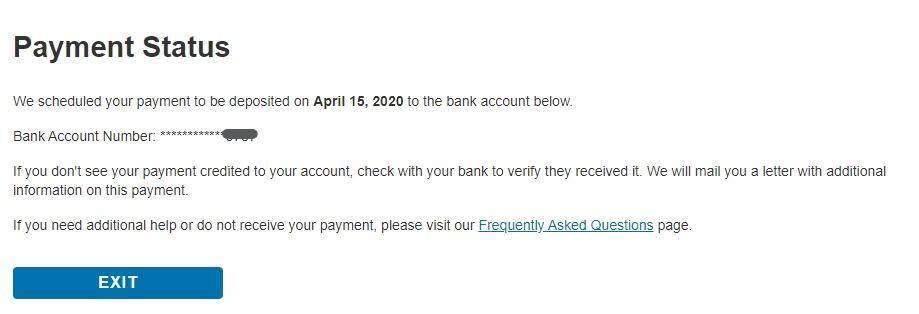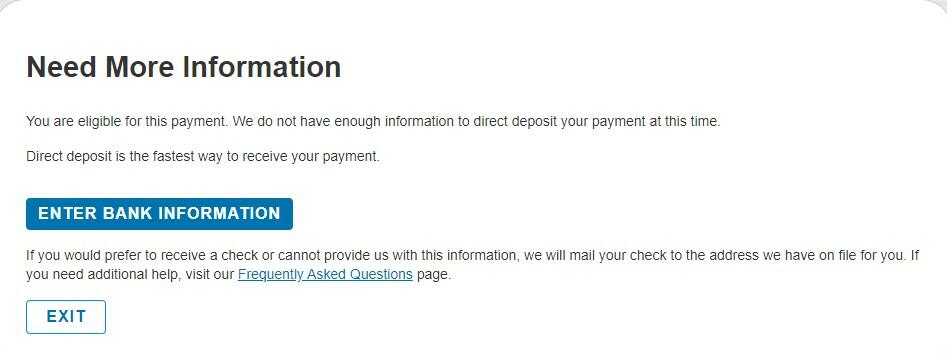
With an initial round of more than 80 million Economic Impact Payments starting to hit bank accounts over the weekend and throughout this week, this new tool will help address key common questions.
The new Get My Payment tool will show the projected date when a deposit has been scheduled and allows individuals to provide their bank information. Those who did not use direct deposit on their last tax return will be able to input information to receive the payment by direct deposit into their bank account, expediting receipt.
To track the status of their payment, they will need to enter basic information including Social Security number, date of birth and mailing address used on their tax return.
(Source: IRS News Release – April 15, 2020)
As taxpayers ourselves, we’ve gone through the same process and noticed the three most common cases you might encounter when entering the site, so we listed them out for you here!
Scenario #1
Congrats! If you see this page, it means that your payment was deposited to the listed bank account on the listed day.
Many of our own friends and family members prompted with this page have confirmed that they had indeed received the payment.

Scenario #2
If you see this page, it means that you need to provide your bank account information for the IRS to direct deposit your payment. Direct deposit is the fastest way to receive your payment.
Please note that you will not be able to update your bank account information after the payment has been scheduled for delivery. To help protect against potential fraud, the tool does not allow people to change bank account information already on file with the IRS.

Scenario #3
If you see this page, there could be several possibilities. You may be ineligible, have not filed taxes in 2018 or 2019, or several other possibilities.

Get My Payment is updated once daily, usually overnight. The IRS urges taxpayers to only use Get My Payment once a day given the large number of people receiving Economic Impact Payments.
The IRS urges taxpayers to be on the lookout for scams related to the Economic Impact Payments. Be careful and cautious: The IRS will not send unsolicited electronic communications asking people to open attachments, visit a website or share personal or financial information. Remember, go directly and solely to IRS.gov for official information.
